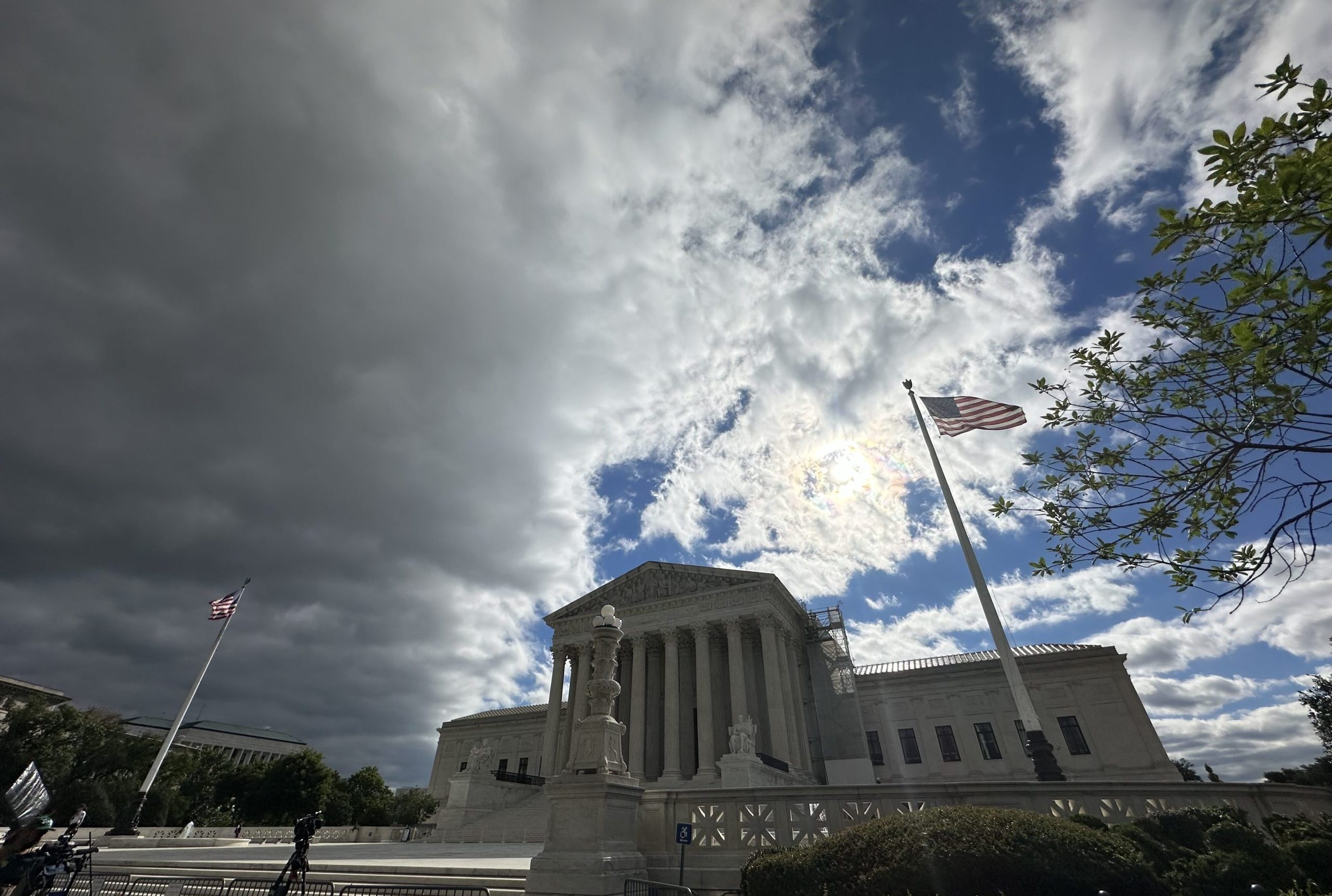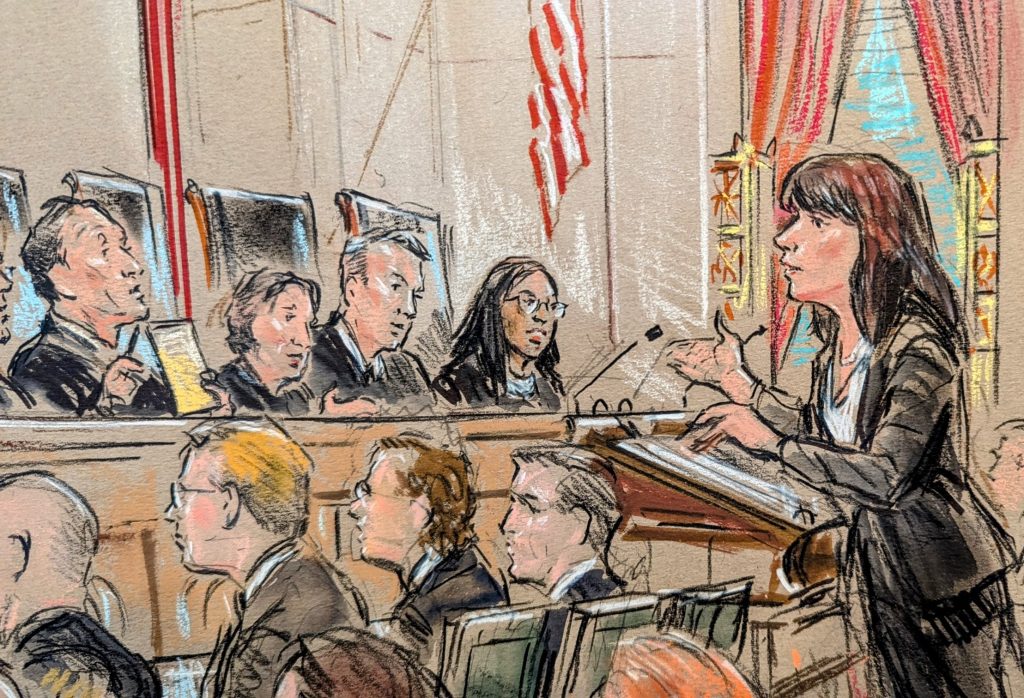Court likely to let Biden’s “ghost gun” regulation stand


The Supreme Court on Tuesday appeared ready to uphold a 2022 federal rule regulating so-called “ghost guns” – untraceable weapons without serial numbers, assembled from components or kits that can be bought online.
Defending the rule, U.S. Solicitor General Elizabeth Prelogar described an “explosion in crimes committed with ghost guns.” She told the justices that “the whole reason why you want to get your hands on one of these unserialized, untraceable firearms is if you are” barred by law from having a gun or if “you want to use that gun in a crime.”
But Peter Patterson, representing the challengers in the case, argued that in adopting the rule the Bureau of Alcohol, Tobacco, Firearms, and Explosives “exceeded its authority by operating outside of the bounds set by Congress” in the Gun Control Act of 1968.
The ATF enacted the rule to address what it characterizes as an “exponential” increase in ghost guns. It relied on the Gun Control Act, which requires manufacturers to put a serial number on guns and regulates commercial gun sales by (among other things) requiring gun manufacturers and dealers to conduct background checks and keep records of gun sales.
The law defines a “firearm” as “any weapon … which will or is designed to or may readily be converted to expel a projectile by the action of an explosive,” including “the frame or receiver of any such weapon.”
The ATF argues that the 2022 rule tracks the language of the law. It defines “firearm” to include products, such as gun kits, that can be converted into an operational gun or a functional frame (the basic structure of the gun) or receiver (the part of the gun that houses the firing mechanism). The rule also clarified that the terms “frame” and “receiver” include partially complete or disassembled frames or receivers that can be “readily” completed or converted to work as a frame or receiver.
A group of challengers that included two individual gun owners and a gun-rights advocacy group went to federal court in Texas, seeking to block the ATF from enforcing the rule. U.S. District Judge Reed O’Connor agreed with them and barred the agency from applying the rule anywhere in the United States, and the conservative U.S. Court of Appeals for the 5th Circuit largely upheld that decision.
But after O’Connor issued his order, the Biden administration came to the Supreme Court, asking the justices for permission to enforce the rule while it appealed. By a vote of 5-4, with Justices Clarence Thomas, Samuel Alito, Neil Gorsuch, and Brett Kavanaugh indicating that they would have denied the request, the Supreme Court allowed the rule to remain in place.

At Tuesday’s oral argument, Prelogar told the justices that the manufacturers of ghost guns were trying to evade federal gun laws by selling gun kits or partially complete frames or receivers. “They’ve advertised the products, in their words, as ‘ridiculously easy to assembly and dummy-proof’ and touted that you can go from opening the mail to have a fully functional gun in as little as 15 minutes, no serial number, background check, or records required,” she said. In fact, she noted, she herself had put one together.
Justice Clarence Thomas pressed Prelogar on the government’s argument that the 2022 rule is consistent with the ATF’s past practice. Prelogar pushed back on any suggestion that the 2022 rule reflected “any fundamental change in approach.” The previous regulations in place, she explained, focused on the same kinds of questions – specifically, how quickly a partially completed frame or receiver could become functional as part of a working gun. And although the new rule now considers tools to assist in drilling, she acknowledged, that too “goes directly to the question that the agency has asked all along, namely, how quickly, easily, and efficiently” can the process of making the item a functional gun “be completed”?
Justice Neil Gorsuch asked Prelogar about a point that Patterson and the challengers also made – the idea that the 1968 law defines “firearm” as a weapon that will “or may readily be converted to expel a projectile” but does not contain the same language for frames or receivers.
It would be “very odd,” Patterson suggested, for the rule to apply to frames or receivers that “may readily be converted” to function as a framer or receiver when Congress did not use that same language in defining frames or receivers in the 1968 law.
Prelogar countered that such an interpretation was the best way to make sense of the 1968 law. Congress, she said, was trying to cover both frames and receivers that fill that function “at the moment they’re sold” but also “framers or receivers that can be readily converted to function with minimal steps.” And if the only difference between the two kinds of parts, she emphasized, is that the latter is missing a single hole, that is no different from a bicycle without pedals.
The 2022 rule should still cover the partially complete frames or receivers, she concluded, even if they are not yet fully functional. Otherwise, she told the justices, gun manufacturers can “avoid the regulation and the essential requirements of serializing, background checks, and recordkeeping just by leaving one little part of the weapon or the frame or receiver unfinished.”
Patterson countered that the law could only apply to complete frames or receivers. But even if the law does apply to incomplete frames or receivers, he continued, the standard is not whether they can be “readily converted” to function as frames or receivers but instead what he described as the “critical machining operations” standard, used by the ATF in the past.
Both Chief Justice John Roberts and Justice Amy Coney Barrett, at least one of whose votes Patterson would likely need to prevail, appeared skeptical. Roberts was dubious about Patterson’s suggestion that the sales of partially complete frames and receivers are targeted at hobbyists who want to build their own guns. “I’m suggesting that if someone who goes through the process of drilling the one or two holes and taking the plastic out, he really wouldn’t think that he has built that gun,” Roberts asked, “would he?”
And Barrett seemed to dismiss the “critical machining operations” standard as “a little made up.” It isn’t derived from the statute, she observed. Instead, she suggested, “it’s just sort of a way of allowing for a de minimis exception, right?”
Justice Brett Kavanaugh expressed concerns similar to those that he had voiced earlier this year at the oral argument in the challenge to an ATF rule that banned bumpstocks. What about, Kavanaugh asked, a gun seller who may not know that he is violating the new rule? Would he still face criminal charges?
Prelogar noted that if a manufacturer believed in good faith that it was not violating the law, it could not be convicted for failing to put a serial number on the gun or for selling the gun without a license. And although the standard was different for someone who failed to conduct a background check before selling a ghost gun, she continued, she suggested that the government was not “likely to charge someone in that kind of situation.” And in any event, she added, that situation was different from those in which “the manufacturers were themselves the sellers putting these products on the market with explicit knowledge that it was being put into the hands of teenagers.”
In her rebuttal, Prelogar again emphasized the possible effects of striking down the rule. Reiterating that the challengers’ “primary argument” is “that a single undrilled hole is enough to exempt a product from regulation,” she told the justices that the court “doesn’t have to blind itself to the practical ramifications” of that argument.
This article was originally published at Howe on the Court.
Posted in Merits Cases
Cases: Bondi v. VanDerStok